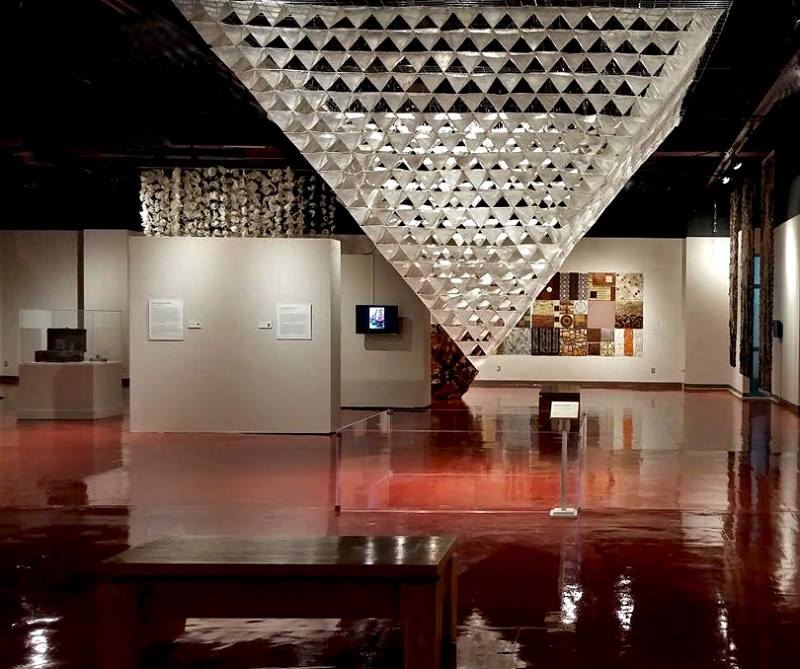
Inverse Pyramid, 2016

Silk, 12' x 12' x 9'
Inverse Pyramid Satement
I chose to work with silk because it represents the first industrial practice in Japan. The slave-like conditions of the almost entirely female workforce was what made possible my country's very first foray into capitalization. Silk also has a long history connecting east and west through commerce, and due to it's inherent strength and translucent beauty has been a mainstay luxury item for "those at the top of the pyramid" over many millennium.
I'm using the pyramidal structure to represent the ascendancy of human hierarchy during the agricultural revolution. Comparing Neolithic archeological sites like Gobleki Tepe, with it's multiple, earth based centers, to the Great Pyramids of Giza, which stood, as tombs for single kings, is instructive. I've chosen the pyramidal structure to draw parallels between the numerous Ponzi schemes, and pseudo-supremacies at work in increasingly hierarchized human social and economic structures worldwide.
In Deleuzian terms I'm transforming the pyramid from an arborescent structure of caste, into a rhizomatic one of equitable multiplicity. It is meant to evoke a world emptied of the oppression inevitably pursued by overarching hierarchies, and to suggest the beauty of a world where power is reposited multi-centrally, and where depth of meaning is valued over social domination.

